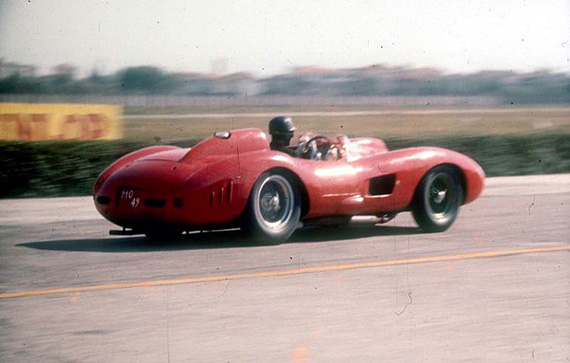
A sunny day at the Modena Autodrome nearly fifty nine years ago. Ferrari appeared with the 335S (0674) to test the Dunlop tires. Test driver Martino Severi at the wheel. This same car sold at Retromobile for $35.7 million. Photo by Graham Gauld.
By Graham Gauld
Regular readers will no doubt be aware that the French car show Retromobile always fires me up and sends me scurrying around the vast hall searching out cars that strike a chord with me or trigger a memory.
On this occasion it was a significant bit of memory and it involves a car that was the first Ferrari I was able to watch closely during a private test session at the Modena Autodrome back in 1957. It was now standing in front of me at the Artcurial auction stand this year.
Two days later that car was sold for a world record price of $35.7 million! (Today CNBC reports that sources say Brian Ross, owner of Ross Development in Cortland, Ohio, was the winning bidder of the 1957 Ferrari 335 Sport Scaglietti that sold for roughly 32 million euros, or $35.7 million).
Ferrari 335 S
So let’s return to that warm day at the Autodrome, a circuit that was roughly square with a diagonal “runway” running from just before the pit lane to half way round a long left hand corner. This was because it was Modena’s little airstrip which, naturally, had a motor racing circuit round it.
I was there because Romolo Tavoni, Enzo Ferrari’s team manager and private secretary, had suggested I go there that day as Peter Collins and test driver Martino Severi would be doing some testing on a newly-rebodied sports car being prepared for the final round of the World Sports Car Championship due to be held in Venezuela a few weeks later.
When I arrived this big Ferrari was gleaming in front of the pits but what immediately marked it out was that the front fenders had been cut away and it looked completely different to how the car had appeared earlier that year at Sebring, the Mille Miglia and Le Mans. The new nose had been crafted by Sergio Scaglietti and was an attempt to improve brake cooling on the car, much like had been done on the 250 Testa Rossa cars.
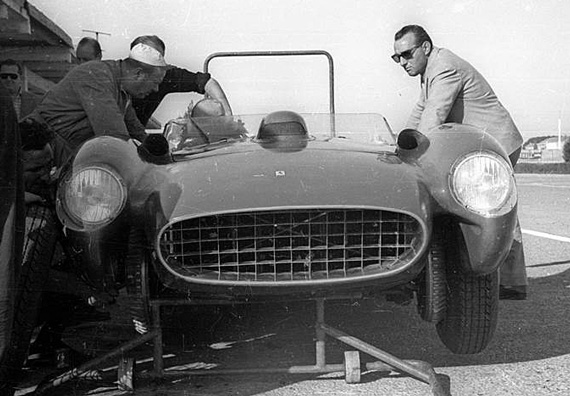
A pontoon nose was fitted to a Ferrari to help cool the brakes. As can be seen the ribbed brake covers are almost totally exposed to the air. When later owned by Pierre Bardinon, it was restored to the previous version without the fender cutouts. Photo by Graham Gauld.
That was not the only new item; the V12 engine had now been punched out to 4.1 liters after the Mille Miglia and so this model was renamed the 335S (The 335 being the cubic capacity of one cylinder) from the previous 315 nomenclature. But there was also something else that was strange; the wheels and tires. Both were by Dunlop in England at a time when Ferrari were contracted to the Belgian Engelbert tires and this was Ferrari trying out Dunlop for the first time as Ferrari switched from the Belgian to the British make at the end of that season.
Everyone was there including, for a brief time, Enzo Ferrari himself. First Martino Severi and then Peter Collins blasted this ear-shattering monster round the circuit. Three 335Ss were built and this one was chassis 0674 that first ran at Sebring in 1957. I remember being fascinated by this new nose section and as a result of these tests the sister car 0700 was given the same treatment before going to Venezuela.
Of course what followed was nothing short of a miracle. Maserati looked likely to win the Championship that year with their equally impressive 450S and 300S cars but they had a disastrous race, with team mates crashing into each other and the like, and Ferrari romped home to win the Venezuelan event with Phil Hill in 0700 and Collins and Musso in 0674 in second place.
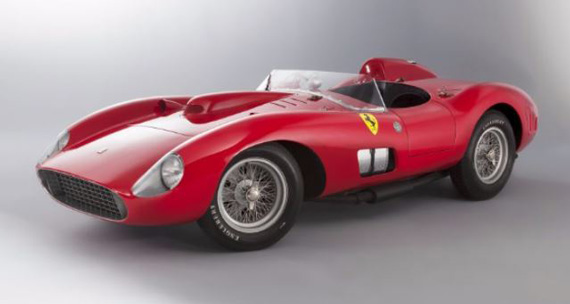
The 335S at the Artcurial Auction where it was sold for about $36 million.Courtesy Artcurial Auctions.
As we know 0674 is still around but so is 0700 in a private collection in the United States. It is interesting that in Paris last week 0674 sported its original closed nose section but the Scaglietti pontoon nose was also sold with the car. Pierre Bardinon had the car restored to it’s earlier Le Mans configuration but kept that distinctive nose for the next caretaker.
Happy memories.
Alfa 6C2500 Competition
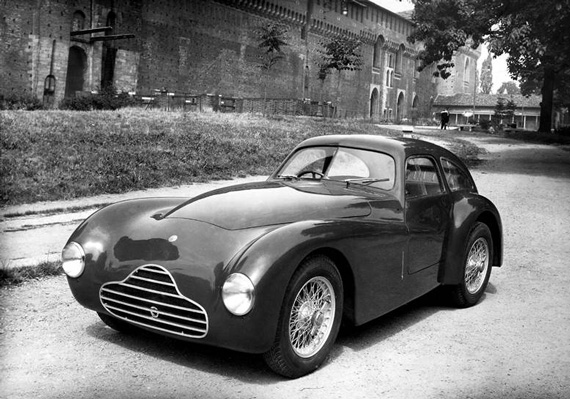
An original factory photo of Chassis 001 which Consalvo Sanesi used to win the second Coppa Inter Europa at Monza in 1948.
Meanwhile back at Retomobile my old Scottish pal Gregor Fisken, who is an active historic racer and historic race car dealer in London, surprised me with a car on his stand, an Alfa Romeo 6C 2500 Competizione aerodinamiche (Chassis 920.002). What made this car interesting was that it is one of only three built and this one was owned and driven by Franco Rol in the 1948 Mille Miglia alongside factory test driver Consalvo Sanesi in an identical car. The Sanesi car was involved in an accident early in the race and retired and Rol also retired. However Rol finished third in the 1949 Mille Miglia and ran it again in the 1950 and 1951 Mille Miglia but did not finish.
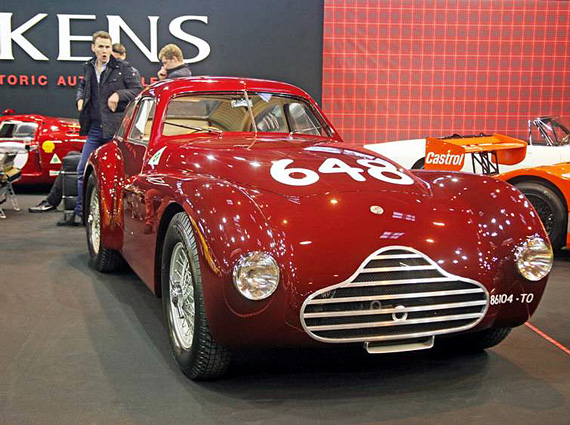
The Alfa Romeo Berlinetta on Gregor Fisken’s stand at Retromobile. This is chassis 002 of a series of three aerodynamic 2500 Alfa Competition cars.
This model can loosely be traced back to a project started in Alfa Romeo in 1943 when World War II was already three years old. It was aimed at being a prototype 2 liter 6C with the code name “Gazzela”.
As for the 2500 aerodinamiche, in 1946 the factory decided to develop a concept car that would be a berlinetta and used for racing. As mentioned three of them were built with beautiful simple lines and built by Carrozzeria Touring. They were developed from the first post-War 2500 Alfa, the Freccia d’Oro (The Golden Arrow) but as they were aimed for racing they were not only lighter – by 700 kilos no less – but also with a much more powerful engine. The road car ran on a 7.1 compression and gave 90 bhp at 4,600 rpm, but the competition coupe produced no less than 142 bhp with a compression ratio of 9.2:1. It was substantially quicker both by virtue of power and weight.
Even looking at the car today if could probably sell and I think if this had been put into production it would have been a sensation. But Alfa Romeo were already working on more marketable cars and had started on the successful 1900 range.
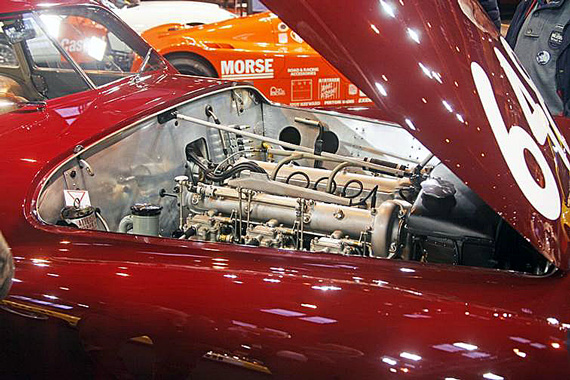
Up-and-coming Champion Guy Moll lost his life in the Coppa Acerbo 1934.
Was there any post-war Guy Moll?
Ah, we love our readers. Yes, it was Franco Rol not Guy Moll and we stand corrected. Thanks!